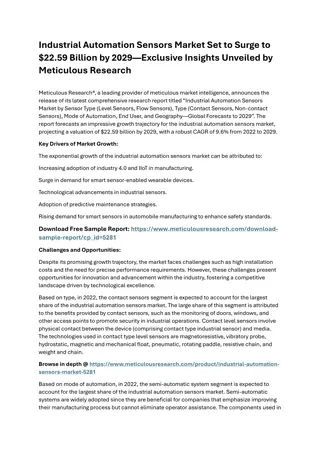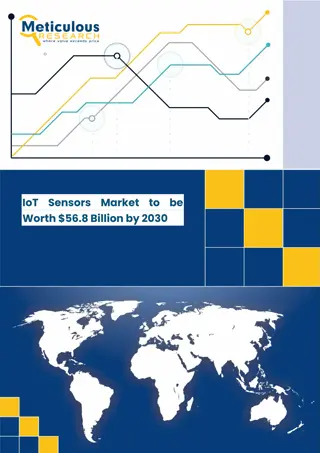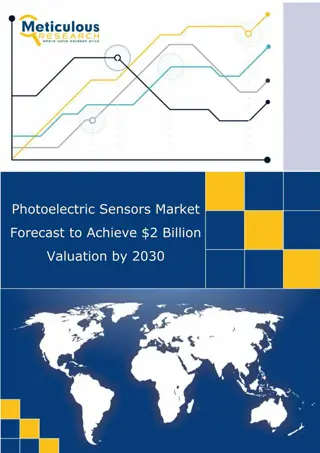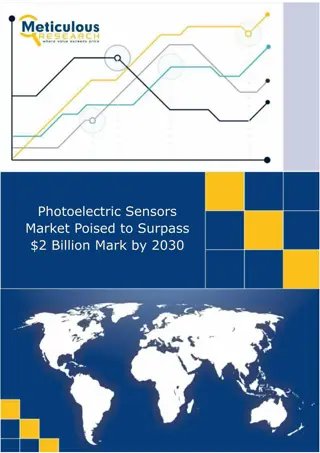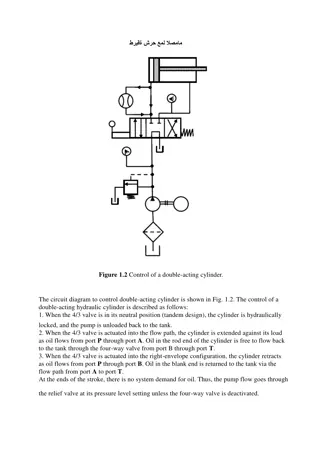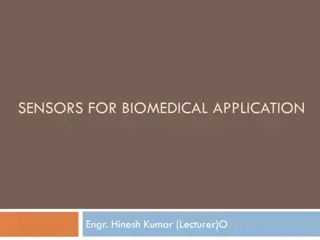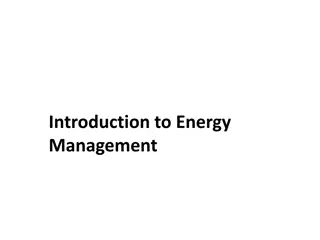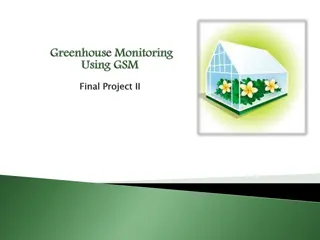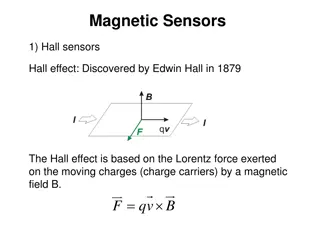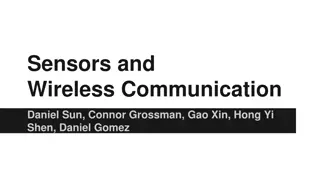Understanding Mechanical Ventilator Sensors and Actuators
Explore the essential components of mechanical ventilators, including sensors like pressure and flow sensors, actuators, and oxygen sensors. Learn about the functions and characteristics of these sensors and how they contribute to the operation of mechanical ventilators designed to assist patients with respiratory issues.
Download Presentation

Please find below an Image/Link to download the presentation.
The content on the website is provided AS IS for your information and personal use only. It may not be sold, licensed, or shared on other websites without obtaining consent from the author. Download presentation by click this link. If you encounter any issues during the download, it is possible that the publisher has removed the file from their server.
E N D
Presentation Transcript
MECHANICAL VENTILATOR: SENSORS AND ACTUATORS Professor Yasser Mostafa Kadah
Mechanical Ventilator Functional Diagram Sensors Pressure Flow Oxygen Carbon dioxide Actuators Valves Air blower
Pressure Sensor Piezoresistive Sensor Solid-state device whose electrical resistance depends on strain of membrane (and hence, pressure) Can be designed to be absolute or differential Can be selected to have very fast response time Resistive strain gauge
Flow Sensor: Pneumotachograph Sensing change in pressure across fixed resistance through which gas flow is laminar to calculate flow rate Analogous to measuring current through resistance in electric circuits Bidirectional operation
Flow Sensor: Variable Orifice Flowmeter Pressure measurement across flow-dependent resistance (flap) As gas flow increases, flap opens more, reducing resistance to gas flow One-to-one correspondence between flow rate and pressure drop Bidirectional operation
Flow Sensor: Hot-Wire Anemometer Resistive wire is placed in flow path and heated using electric current Resistance increases linearly with temperature Flow cools down wire and changes its resistance Resistance change can be measured and used to estimate flow rate Fast and accurate but direction insensitive
Flow Rate Sensor: Vane Anemometer Used to measure exhaled tidal volume in breathing circuit near exhalation valve
Oxygen Sensor: Fuel Cell or Galvanic Cell Diffusion of oxygen starts chemical reactions Flow of current depends on uptake of oxygen at the anode (Faraday s first law of electrolysis) Voltage output is proportional to oxygen partial pressure Response time (~20-30 s) and depleted by continuous exposure to oxygen because of exhaustion of the cell (less than 1 year lifespan)
Oxygen Sensor: Paramegnetic Oxygen is paramagnetic while other gases are diamagnetic Magnetic field causes oxygen molecules to be attracted and agitated Pressure difference proportional to oxygen partial pressure Very accurate, highly sensitive and fast response Allows continuous monitoring Long lifespan with no service requirements
CO2 Gas Sensor (Capnography) Infrared absorption spectroscopy Based on physical principle that gases absorb infrared radiation at characteristic frequencies Level of absorption depends on concentration of molecules according to Beer-Lambert law: Concentration = Absorption constant ln(I0/I ) Measures End-Tidal Carbon Dioxide (EtCO2) Io I
Proportional Solenoid Valves Idea: constriction causes significant pressure drop Control of pressure/flow of gases Inspiratory valve (control of ventilation mode delivery) Expiratory valve (Control of PEEP)
Solenoid Pinch Valves No contact with air No need for sterilization after use Particular application: expiratory valve Proportional control of flow
Check Valves Ensure unidirectional flow in both inspiratory and expiratory limps Mechanical operation
Adjustable Pressure Limiting (APL) Valve Safety of airway pressure during positive pressure ventilation to avoid barotrauma Usually a mechanical device but can be implemented as a solenoid valve
Pressure Reduction Valve Essential for oxygen cylinder interface to ventilators Reduction of pressure to 4.1 bar Mechanical operation
Air Blower Common technology: Centrifugal Blowers Ideal to maintain continual gas transfer and for creating high pressure from small volumes of air Speed controllable Silent operation
Practical Issues: Pressure Measurement Mechanics Electricity Pressure Voltage Flow Current Volume Charge Resistance Resistance Compliance Capacitance Valve Switch Pressure measurements differ by location Each circuit part has a resistance Pressure measurements should not be affected by temperature or humidity Valves Sensors HME Patient Airway Breathing Circuit
Practical Issues: Volume Measurement Volume/flowrate measurements differ by pressure, humidity and temperature Gas law: ? ? = ? ? ? ATPD: Ambient Temperature and Pressure Dry (Ventilator side measurements) BTPS: Body Temperature and Pressure Saturated (Patient actual values) Example: Volume change by temperature ????? = 37 C , ?????= 22 C Humidity affects gas partial pressures At full water vapor saturation, water vapor partial pressure pH2O is entirely dependent on the temperature and is 47mmHg at 37 C, which is 6.2 vol% (= (47/760) 100 vol%) at standard atmospheric pressure pbaro = 760 mmHg With its unchanged composition, respiratory air now takes up only 93.8% of volume In this wet gas, oxygen only has a concentration of 19.7% (= 0.938 21%) or a partial pressure of 19.7% 760mmHg = 150 mmHg
Recommended Textbooks Daniel Aston, Angus Rivers, Asela Dharmadas, Equipment in Anaesthesia and Critical Care: A Complete Guide for the FRCA, Scion Publishing, 2014. Jan Ehrenwerth, James B. Eisenkraft, James M. Berry, Anesthesia Equipment: Principles and Applications, Elsevier Saunders, 2013.




